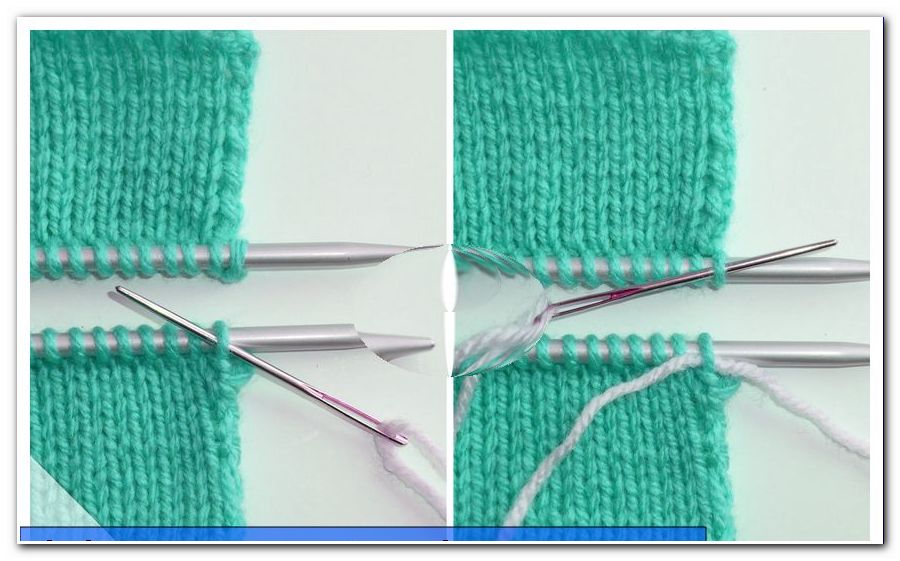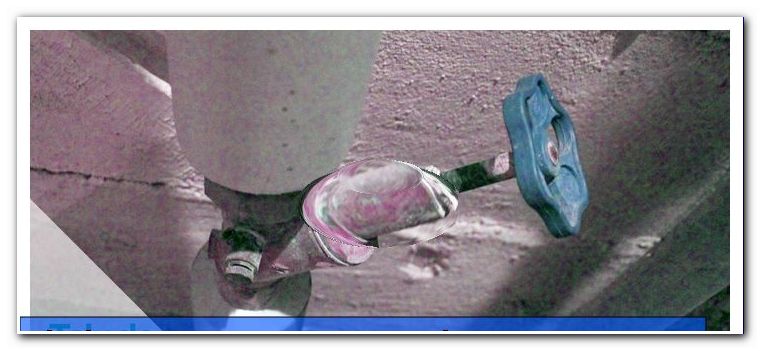Garden Hibiscus, Hibiscus syriacus - Care from AZ

- site conditions
- ground
- plants
- Transfer hibiscus
- Water and nutrients
- cutting measures
- wintering
- proliferation
- threats
- Care in the bucket
Hibiscus has been valued for centuries as a garden plant. The mallow plant delights with a variety of flowers and spreads Mediterranean mood in the local garden. Although the garden marshmallow has modestly large flowers in comparison to its tropical relatives, it is fairly hardy for it. In recent years, many new varieties have come on the market, some of which are particularly hardy, or the flowers do not rain more quickly, as is the case with some "old" varieties. Hibiscus syriacus has a choice of single or full-bloomed shrubs, mainly in white, pink to pink and different shades of blue.
The garden hibiscus is two, no more than three feet tall and fits in small gardens. Even less space claims a high trunk, which also offers the advantage that you can plant it.
site conditions
The garden hibiscus likes it warm and sunny and enjoys a sheltered place in front of a wall. In any case, he should stand a bit sheltered. This is especially important in winter. Cold easterlies can do some damage.

- warm and sunny
- ideally in front of a south-facing wall
- Plants are protected and the stored heat is released and warms
- beautiful as a solitary, but also for group plantings and hedges they are suitable
ground
The right soil is crucial for the development of the garden hibiscus. It should be permeable and loose, so that excess water can drain well. Standing wetness is not tolerated. Too dry floors, however, are not ideal. Here can be created by mulching remedial action. Mildly soils can keep the water longer, they do not dry out so quickly. Too heavy soils should be loosened up with sand or fine gravel.
- necessarily nutrient-rich
- permeable
- a bit clayey, not too much
plants

The best planting season for a garden hibiscus is the spring . Then the plant has enough time to root properly. Although the hibiscus can be brought into the soil until autumn, but when the following winter is hard and long, there are often frostbite or the plants weaken in the coming year. It is important to keep the soil until it grows, which takes several months, constantly slightly moist.
- plant in spring
- sufficiently large planting hole
- Loosen soil
- Add compost
- Plant as deep as in the jar
- casting ring
- water abundantly
- keep it moist for the next few weeks
Transfer hibiscus
It's not ideal to replant a hibiscus that has grown once, but if you can not help it, you can try it. Again, the best time is spring, but the time when the last heavy frosts are over, ie in March / April. Dig up the shrub over a large area so that no roots are damaged. Then place in a planting hole as described above. This should not only be prepared with compost, but should also be well-watered. Insert the shrub and fill with soil. In turn, the casting ring is important, and that is followed by purging. What you should definitely do is the hefty pruning. That's crucial for rooting. It is beneficial to mulch the soil so that the moisture is retained longer.
- March April
- Prepare well and water well
- carefully dig up and transfer
- Fill the earth
- casting ring
- mulch
Water and nutrients
Sufficient water is important for the development of a garden hibiscus. Especially after planting the soil must not dry out. Once grown, the plants thrive best when the soil is mulched. Then the moisture stays in the soil longer, it does not dry out so quickly and it does not have to be poured so often. In dryness, the plants are happy about an additional watering. When watering, be sure to pour on the trunk as low as possible, not over the leaves. Frequently moist leaves are prone to powdery mildew. Ideal is a casting ring around the plant, then the water can not run away and comes exactly where it is needed.

- in the summer sufficiently moist soil
- no waterlogging
- Avoid dryness - Bud shedding
- Mulching soil
- casting ring
- in continuous rain the flowers sank
Rosemary needs a lot of nutrients to develop many flowers and then open them. Fertilization is especially important after pruning in early spring. Favorable are horn shavings or compost. In the case of nutrient deficiency, the shrub reacts with weak sprouting and low flower bud. To bring the shrub well over the winter, an autumn fertilization with patent potassium is recommended. The best time for this special fertilization is the month of September. Otherwise, do not fertilize after July so that the shoots can ripen and are not so frost-prone.
- necessarily fertilize after pruning
- suitable is compost
- alternatively horn shavings
- Autumn fertilization with patent kali
cutting measures
A cut is not a must, but still recommended. But to achieve a dense shrub or a dense crown in the case of a high stem, you have to cut it. In addition, such a cutting measure promotes budding. The garden hibiscus flowers on this year's wood, so that the plant no disadvantages. There are lots of flowers.

Especially important is a cut right after planting. The shoots are reduced to give the plant the opportunity to put more power into rooting. Once the hibiscus has established, it starts to grow. In addition, young plants should be cut so that they branch better. They cut in late winter, late February, early March, when the heavy frosts are over. Shorten 1/3 of the shoot length. Bold gardeners can also cut away 2/3, I always do and our high tribe is absolutely dense and in summer a single flower landscape.
Of course, you can buy a high strain, but also educate yourself. Important for this is a bush with a strong and straight central drive. From this every year, the lower shoots are cut directly on the desired trunk until the final height is reached. Then only the shoots are shortened.
- Cut in late winter
- Shorten 1/3 to 2/3 of the shoot length
- cut so that an outward-facing eye is the last one
- necessarily cut after planting
- Educate stems possible
wintering
The garden hibiscus tolerates temperatures down to -20 ° C after a few years. In the first few years, the winter hardiness is not so good. Especially young plants can easily harm frost. Therefore some winter protection is recommended in the first years. In addition, a suitable location is important, which should be something protected. In particular, the root area must be protected, a thick mulch or deciduous layer is very helpful. Even if some shoots freeze for as long as the root is alive, the hibiscus also drives out again. High trunks are often slightly more sensitive than shrubs. 
Here it can make sense to wrap the "crown" in a fleece. Our Hochstamm has taken damage in its first two years, each on the windward side.
- Protect young plants and freshly planted hibiscus
- mulch or deciduous layer
- protect from wind
proliferation
Garden hibiscus is easy to propagate. You take cuttings, preferably the ones that occur during pruning. The cuttings should not be completely lignified and come from last year. The cuttings are shortened to about 10 cm. Remove the lower leaves to reduce evaporation. Two eyes should remain. Place cuttings in a loose substrate, in a small flower pot or in a sheltered outdoor space. Strong sunshine is absolutely to be avoided. Otherwise, the cuttings need heat and constant humidity, no moisture. If you want to accelerate the rooting process, you can put a plastic bag over the cutting edge. This creates a kind of greenhouse whose climate has a favorable effect on growth. If the cuttings start to drive out, the bag is removed.
- cuttings
- fall when cutting
- not completely woody yet
- stuck in loose substrate
- Bag over it
- warm and slightly damp
threats
The garden hibiscus is robust. Diseases are rare and pests are not specific. Most damage is usually frost. Some flowers do not tolerate rain, they stick together and do not open anymore. The best way to find a variety that is hard to take. Aphids appear every now and then. It is beneficial if you notice them early, before they have multiplied massively.

With a few specimens, you can simply grab the water hose and rinse the pests with a sharp jet. Alternatively, a mixture of water and curd soap or detergent helps to spray the entire shrub. It is important, especially under the leaves to spray.
- Stuffed flowering varieties are very sensitive to rain, significantly more than unflowed blooming
- Treat aphids with water or soap solution
Care in the bucket
A garden hibiscus can also be cultivated in the tub, at least for a few years. The most beautiful are the tallest stems. They can also be well planted. Suitable substrates are flower or container potting soil. Important are the regular watering and that is poured penetrating. The water should run out of the bucket below. Excess water can drain off particularly well if there is drainage in the bottom of the pot. Nutrients are also important in the tub. Here it is enough to fertilize properly after the cut, preferably with long-term fertilizer. After 6 to 8 weeks then fertilize again.

The hardest part is hibernation. The bucket must not freeze. This works best when the plant including the vessel is winterized frost-free. It is important to water even in winter, but not in frosty weather. The cooler the hibernation, the less water is needed. Alternatively, the bucket can be buried in the fall. In the spring, you bring it back out of the ground, clean everything and that's it.




